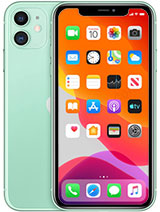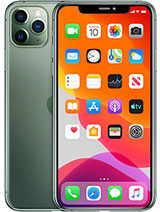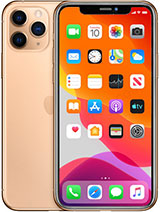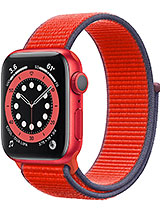iPhone 11 Pro vs iPhone 11 - Which Should You choose? By zollotech
Hi everyone Aaron here for ZolloTech and the iPhone 11 Pro in the iPhone 11 have been out for a little while and if you're trying to decide which one to get I'm hoping this will help you decide which one is best for you now. The first thing is the colors, the iPhone 11 Pro comes in this new midnight green color. It also comes in Space Gray, which I have here in the pro max, which they're identical in every way except their size, and you also have a silver and a gold as well. On top of those two colors with the iPhone 11, you have an all new green color that I have here. You also have a new purple along with white, black, yellow and product red, so those are all the colors that are available for these devices. Now the actual price of them is a little different.
In fact, the iPhone 11 Pro comes in at $300 above what we have with the iPhone 11, so the prices start at $9.99 and go all the way to 1349 at those prices. You've got the option for 64, 256 or 512 gigabytes of storage. It is not expandable storage in either of the devices on the iPhone 11. This one comes in at $6.99, which is $50 cheaper than last year's iPhone 10 our model and goes all the way to eight hundred and forty-nine dollars. It comes in 64, 128 or 256 gigabytes of storage.
The sweet spot is 128 gigabytes for the iPhone 11, since it's only $50 more, so I would go for that. If you need a little more storage, it's seven hundred and forty-nine dollars now the actual construction of both of these devices is a little different. The iPhone 11 Pro is made out of stainless steel. So it's got a stainless steel band all the way around. It's both glass back and front, and it's supposed to be stronger glass this year on both devices, but the pro and the pro max also have a matte finish on the back, whereas the camera bump is actually a glossy finish.
Apple has changed this on the iPhone 11 models and swapped that around, so you'll see that the back is glossy on the iPhone 11, where the camera bump is actually a little of a matte texture. So it's all one piece of glass. Now the construction of the iPhone 11 is aluminum, and you have this aluminum ring around the outside edge similar to the iPhone 10 are of last year, but that's the main difference as far as build when it comes to the actual weight of them. The weight is very similar. The iPhone 11 Pro is six point: six, three ounces or 188 grams.
The iPhone 11 is six point. Eight four ounces or 194 grams, so they're very close and weight, and you do have that size difference, though, because this is aluminum, it will be a little lighter than the pro max model. If you're going for that now, the big factor that's different between both of these is the display on the iPhone 11 Pro you have an OLED display which has more vibrant colors, along with a higher pixel density. So you have 2436 by 1125 with 458 pixels per inch this year, Apple calls it a super Retina DR display. It allows for HDR video if you're using the Apple TV app, but you can still only watch 1080p on YouTube and that's due to a dispute with Apple and Google and not supporting different versions of codecs that allow you to watch those videos.
As far as the iPhone 11 goes. This is a lower resolution display, but it's a liquid Retina display it's probably the best retina LCD on the market. At this point, it's 1792 by 828 pixels, with a density of 326 pixels per inch. You still cannot see the pixels and the display does support HDR 10, and you can watch 1080p videos on YouTube. So if we go to one of my videos, you can see the resolutions available are 1080p on both of these displays.
It's scales to 1080p when you're watching a YouTube video. You can't see the pixels when you look at them side-by-side. They look great overall and I. Think most people that are not really into specs and things like that will notice no difference whatsoever. Other than vibrancy of an OLED display, you will have brighter colors and deeper blacks, because on an OLED display where there is the color black, it actually turns off those pixels.
It also goes a lot brighter on the pro you have 800 nits, when it's turned all the way up, and it can peak up to 1200 nits on the iPhone 11. It's hard to show you on this camera, but the iPhone 11 goes to about 600 nits as far as its maximum brightness right around those areas, so they're fairly bright, they're, both viewable in sunlight, but they are a little different now this year, all devices that are new have haptic touch.3D touch is gone, so that means it's replaced with a long press. You still get all the same features you would before for the most part, but it's more of a long press, it's not as intuitive, and you actually don't feel like you're pushing into the screen to activate those shortcuts. So if you push on it, it's not exactly the same, but it's the same between all the new devices, so you're not compromising when switching from device to device. The speakers on both of them are equally loud.
They both support Dolby Atmos. They both have a nice stereo wide stereo sound. You have a top speaker up here at the top, where you listen to your phone calls, but it's also projecting sound towards you and then at the bottom. You also have speakers, but they're a little different as far as the size or as or at least the way they look now. As you can see together due to the antenna lines, it's a little asymmetric on the iPhone 11 Pro.
This isn't really an issue. The sound is all the same, and these are the microphone and speaker array. So, overall, it's very good. Now the batteries are also differentiating factors when it comes to both of these. The iPhone 11 Pro has a 3046 million power battery, whereas the iPhone 11 has a slightly larger 3110 million power battery.
However, the iPhone 11 Pro tends to get about one to two hours more in battery life overall, with screen-on time. That's due to the efficiency of the OLED display new efficiencies. The Apple has made this year as well as the new, a 13 Bionic chipset. So you will get good battery life in both, but the 11pro may get you an additional hour or two and speaking of that chipset, the 13 Bionic is in both of these devices. You have the same chipset you have the same amount of RAM.
Everything is the same as far as performance between both of them. So if you're opening an application, maybe you're opening settings you'll notice that they open at the exact same rate, if you're doing any tasks that are more intense, you're, really not going to see a difference when it comes to any of those. It's equally fast on both devices. There's zero compromise, picking one over the other when it comes to speed performance and all-day usage, there's also no compromise when it comes to face ID they're. Equally fast, they unlock at the same rate because they're the same version of face.
I'd they work really well, and that also leads me to the cameras which are the exact same cameras on the front this year. So if I go into the cameras flip the screen around, they are both 12 megapixel, sensors, they're, true depth, cameras. You can do emoji and emoji me emoji, whatever you'd like you, can do that with the forward-facing cameras, and then you can record 4k 60p video. So if you want to record video I actually recorded the iPhone 11 Pro video that I did as far as the review completely with the camera on the 11pro. So it's perfect anytime I'm on the screen.
The actual forward facing camera is what you're, seeing as far as the rear cameras, they're identical in every way, except the iPhone 11 is missing the telephoto lens, so they're all 12 megapixel sensors, but the iPhone 11 is lacking a telephoto lens, but it still can zoom digitally and if I show you this photo here, you'll see one is using the optical lens. One is using digital zoom, and it's very hard to tell the difference between the two Apple does a perfect job at two times zoom, to give you the best result possible, so I wouldn't say you're missing a lot. Unless you need to zoom past 2x, you really don't need anything as far as the telephoto lens. Instead, you've got a wide and ultra-wide, which I think is much more useful for most people and their incredible cameras. They both record in 4k 60p, if you'd like to do that high frame rates for slow-motion.
They both have portrait mode this year too, and they both can do portraits of animals or objects. So if we go into portrait mode last year, because we only had one lens on the iPhone 10 R, we could only take portraits of people instead. Now we can take portraits of flowers or anything else we would like as well now. One of the other big factors between both of these is the OLED display actually has PWM or flicker that you can't see with your eye but affect some people and give them headaches or make them feel nauseated, and you can see that here in slow motion where the iPhone 11 Pro is actually flickering all the time in slow motion. You just can't see it, but otherwise it's flickering and that helps it control brightness and that really affects some people's eyes gives them headaches, like I said so.
The iPhone 11 does not have that because it's an LCD. So that's something to consider, although the flicker rate is better this year than it was in previous years, I don't seem to get headaches like I used to, so it is better overall, but it's still something to consider now. The overall size of both phones is very similar. However, the iPhone 11 Pro is slightly larger due to that larger display and does feel a little more bulky. So, if you're coming from an iPhone SE, for example, the iPhone 11 Pro- is a very good compromise of a larger display and a more comfortable size.
However, if you want a giant phone, you'll want to step up to the iPhone 11 Pro Max, where it is much bigger and much more noticeable in the hand when you're holding it. So just keep that in mind. The size is not a big deal for most people, especially if you like the larger phone. But if you want a smaller phone, the 11pro is the way to go now. The good thing is this year, both devices have ip68 certification.
The iPhone 11 Pro actually has a little better IP 68, and what that means is water resistance, although you should still use a case, if you're going to bring it underwater, because Apple does not cover that water damage if it does get damaged. So, for example, the iPhone 11 Pro has I ate up to four meters deep for 30 minutes. The iPhone 11 has two meters deep for up to 30 minutes, so it's very similar just a little different. Both devices support fast charging, where you can get 50 percent battery life in 30 minutes, but only the 11 Pro comes with the fast charger in the box. The iPhone 11 comes with the 5 watt charger.
If you want faster charging if to purchase that separately now between both of these they're, almost the same except the size, the display the battery life and then the lack of the telephoto lens other than that they're almost identical in way either. One is a great choice. If you're trying to figure that out and if you're on a budget get the 11, you won't be disappointed if you're, really looking for the best in the top of the line, then get the pro either. One I think you'll be happy with, but let me know which one you'll choose and why, in the comments below, if you'd like to get your hands on this wallpaper, of course, I'll link it in the description as I always do, and if you haven't subscribed already, please subscribe and hit that notification bell. If you'd like to see more of these videos as soon as they're released, if you enjoyed the video, please give it a like, as always thanks for watching this is Aaron I'll see you next time.
Source : zollotech







![Call of Duty Mobile on iPhone 12 Pro Max + Handcam [Full iPhone 12 Pro COD Mobile Handcam Gameplay]](https://img.youtube.com/vi/uTjtcbFutKc/maxresdefault.jpg )





![The Ultimate Pixel 3 Camera Upgrade [Moment Lenses Review]](https://img.youtube.com/vi/Ct5xDATPiks/maxresdefault.jpg )















